Maintain and Solve Problems
Monthly Tips
Keep Your Landscape Thriving
Successful gardening in North Texas depends on doing the right things at the right time. Find Gardening To-Do Tips for each month! Learn what to do in the yard and garden with gardening tips specifically for Denton County and North Texas.
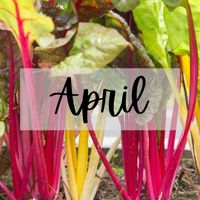
Plant
In most parts of North Texas it is safe to plant warm weather crops into garden beds. Always check the 10 day forecast just in case a very late freeze is predicted. If you have been growing indoors, remember to harden off the new plants before you plant outside. Let new seedlings spend a few hours, and then days outside in dappled sun to become adjusted to their new environment. Make sure they don’t get sunburned. See below starting from seeds link.
It’s time to plant seeds outdoors for beans, squash, okra, cucumbers and melons.
Still a good time to plant all types of trees, shrubs and perennials. Plant roses and summer flowering shrubs.
Fertilize
Fertilize roses if not done in March.
Organic Option: Roses will benefit from a foliar spray of organic amendments. Drench soil as well. Compost and mulch the area well.
Fertilize warm weather grasses with nitrogen. Don’t use more than the recommended amount. Be mindful of the run-off of unnecessary fertilizing. See below the Agrilife article for more comprehensive information.
Prune
Most major pruning should be completed. Prune fruit trees at bud break. Prune any suckers or water spouts. Pruning of red oaks is not recommended until after July.
If Spring flowering plants have finished blooming, you can prune. Not before, or you will lose the season’s flowers.
Timely Tasks
Depending on the weather, we need to think about water needs. One inch per week is needed for most plants and lawns. In a wet Spring, this is not an issue, however, if it’s dry just remember to water. Especially, watch any new plantings. It takes trees and woody shrubs up to 2 years to become established.
Make sure tree flares are visible and that no mulch or weeds are near the trunk. Once the threat of a freeze has passed, put out bird feeders and waterers.
Disease or Insects
Use these great resources to learn about controlling disease and insect pests in your garden.
Texas A&M AgriLife Extension, “Extension Entomology”
Texas A&M AgriLife Extension, “Texas Plant Disease Handbook”
Learn More
Texas A&M AgriLife Extension, “Lawn Fertilization for Texas Warm-Season Grasses”
Texas A&M AgriLife Extension, Earth-Kind® “Timely Tips on Starting Seedlings at Home”
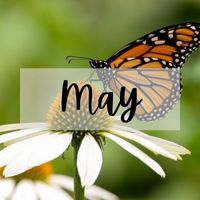
Plant
It is safe to plant all warm season grasses, flowers and tropicals. Plant melons. No freeze warnings are likely in May. If you have harvested cool weather vegetables, you now have additional room for a summer crop. Plant early in the month to avoid the heat that is coming. Great time to start an herb garden. Plant extra dill, fennel and rue for Swallowtail caterpillars.
Plant ground covers, paying close attention to sun requirements. Plant annuals in containers for a beautiful summer display.
Fertilize
Use a good root stimulator when planting. Fertilize fruit trees over the whole root zone with a 2” layer of compost or 21-0-0. Do not let any fertilizer touch the trunk, as this can cause rot and disease.
Prune
Climbing roses can be pruned after their first bloom. Other roses can be pruned as needed to promote more blooms.
It’s always a good time to remove dead and dying branches. Red Oak trees are susceptible to oak wilt. Pruning is not recommended until after July.
Timely Tasks
Weed your garden beds when weeds are small. Much easier! Keep mulch down to eliminate many of the annual weeds.
Check the correct mowing height for your particular lawn. Mow according to its needs. Cutting grass too low can create issues and weaken the root system. Leave clippings on the lawn.
Start thinking about a fall garden. You can start tomato and pepper seeds indoors through June for planting in the garden in July/August.
Set up additional bird feeders, and a water source. Don’t forget the hummingbirds.
Disease or Insects
Watch for any insect damage. Grasshoppers and caterpillars can be destructive. Bacillus Thuringiensis is quite effective to control caterpillars and has less of an impact on the environment.
Keep an eye on tomato and pepper plants for signs of disease. Leaves that are curling or turning a lighter color can mean you need to take action. Always keep tomato leaves above soil level and keep the area mulched.
Learn More
Texas A&M AgriLife Extension, “Extension Entomology”
Texas A&M AgriLife Extension, “Texas Plant Disease Handbook”
AgriLife Today, “Prevent the spread of oak wilt in Texas this spring”

Plant
Bermuda, zoysia and St. Augustine grasses can all be planted as sod. Bermuda can be seeded, but will need to stay moist to germinate. Keep sod well watered until established.
Time for indoor seed starting for your fall garden. This gives seedlings time to get established before being moved outdoors. Always harden off before putting in garden beds. Hardening off seedlings before planting is important for success. The article in the link below contains great seed starting information.
Fertilize
If you are using synthetic fertilizers, be careful not to burn plants. Always read directions carefully. Don’t over water natives, as they don’t appreciate it. If using an organic approach, use a good foliar spray and balanced slow release fertilizer. You can thoroughly drench the soil and leaves with no danger of burning.
Prune
Trim back any unsightly limbs or branches of perennials. Remove spent blooms to encourage additional blooms. Wait to prune red oaks, until after July. Always cut back blackberry canes that have bloomed and fruited. Leave all new canes in place for next year’s crop. Keep mulched. Clean tools with alcohol between plants when pruning to avoid possible contamination.
Timely Tasks
Make sure mower blades are sharp and clean. Always clean tools after each use to prevent the spread of disease. Sharpen hand tools often.
Mulch all bare soil, keeping it off of tree and shrub trunks.
Disease or Insects
Use these great resources to learn about controlling disease and insect pests in your garden.
Denton County Master Gardener Association, Gardening Basics, “Integrated Pest Management (IPM)”
Texas A&M AgriLife Extension, “Extension Entomology”
Texas A&M AgriLife Extension, “Texas Plant Disease Handbook”
Learn More
Denton County Master Gardener Association, Gardening Basics, “Caring for Gardening Tools”
Denton County Master Gardener Association, Gardening Basics, “Understanding Fertilizer Labels”
Texas A&M AgriLife Extension, Earth-Kind® “Timely Tips on Starting Seedlings at Home”
Texas A&M AgriLife Extension, “Fall Vegetable Gardening Guide”
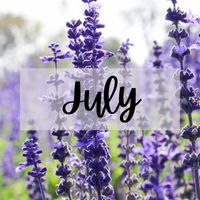
Plant
Set out the indoor transplants you started that are ready. They will likely need protection from the heat and direct sun for the first 2 weeks.
Plant melon and winter squash seeds in the garden for a fall harvest. Winter squash will keep nicely into the winter months once it is cured. It’s a simple process and well worth the effort. See below how to cure and store winter squash.
Direct sow carrots, beets and other root crops. Protect from heat and keep well watered until seeds germinate. Root crops should be started by sowing directly into the garden, as they do not transplant well.
Direct sow seeds of cucumbers, beans and summer squash for fall harvest. If you didn’t start broccoli or cauliflower indoors, you can purchase transplants at your local garden center. Plant in the garden late this month. Cover with shade cloth.
Fertilize
Most summer vegetables are heavy feeders. Compost is an easy way to keep a continuing amount of nutrients in your vegetable garden. Layer it on top of soil but under the mulch for a healthy well-fed garden. Replace mulch on top of compost to hold in moisture and protect from direct sun.
Fertilize roses now for a great fall bloom.
Prune
Trim back any unsightly limbs or branches of perennials. Remove spent blooms to encourage additional blooms.
Wait to prune red oaks, until next month. There’s less chance of oak wilt.
Always cut back blackberry canes that have bloomed and fruited. Leave all new canes in place for next year’s crop. Keep mulched.
Timely Tasks
It’s hot outside and plants can become stressed. Watch closely your watering strategy. Take a stroll in the mornings and observe your garden. Plants should not be wilted in the morning, so this will be a good indication if they need additional water. Wilting in the late afternoon is not unusual as it is your plant’s way of conserving moisture.
Water and feed the birds.
Keep your soil mulched to hold in precious moisture and cut down on weeds. Use native tree trimmings or other natural products. Avoid dyed woods that may contain treated pallets or other chemicals.
Disease or Insects
Use these great resources to learn about controlling disease and insect pests in your garden.
Texas A&M AgriLife Extension, “Extension Entomology”
Texas A&M AgriLife Extension, “Texas Plant Disease Handbook”
Learn More
Harvest to Table, “How to Harvest, Cure, and Store Winter Squash”
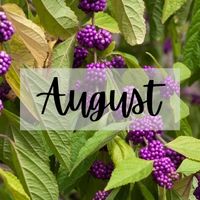
Plant
Set out fall garden transplants. This includes broccoli and cauliflower. Protect from heat and sun. Shade cloth is a must for August. Direct sow seeds of cucumbers, beans and summer squash for fall harvest. Direct sow more beets, carrots and other root vegetables. Keep moist until seeds germinate. Try using straw as a mulch until seeds germinate to provide protection from our summer sun.
Still time to sow wildflower seeds.
Plant fall annuals.
Fertilize
Continue fertilizing all summer vegetables as well as summer flowering plants. Thoroughly water in all fertilizers.
Prune
Trim back any unsightly limbs or branches of perennials. Remove spent blooms to encourage additional blooms.
Prune red oaks as needed removing dead or damaged branches. Major tree pruning should be done in the winter or early spring.
Take out any vegetables that are showing disease or that have finished their production. This will make room for fall plantings.
Timely Tasks
Watch your garden closely for heat stress. Check your water systems to be sure they are working properly. August is traditionally very hot and dry. Water all new plantings quite thoroughly and protect from heat.
Don’t forget the birds. Water may be scarce.
Mow lawns at the recommended height according to your grass type. Leave clippings on the lawn to add back nutrients. If needed you can add clippings to your compost pile.
Remember to stay hydrated as you work in your garden. This is August!
Disease or Insects
Use these great resources to learn about controlling disease and insect pests in your garden.
Texas A&M AgriLife Extension, “Extension Entomology”
Texas A&M AgriLife Extension, “Texas Plant Disease Handbook”
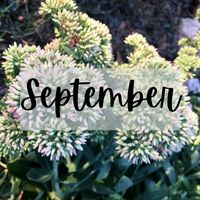
Plant
Time to plant lots of color for fall. Chrysanthemums come in various colors and varieties. Plant in pots and containers. Check out your local garden centers for fall flowers. Plant perennials late in the month after the weather cools. Sow poppy seeds for a fall display. Keep moist until seeds germinate.
Transplant established bulbs. Divide spring blooming plants if they have become crowded. Place tulips and hyacinth bulbs in the refrigerator in preparation for planting in December.
Direct sow seeds for cool season vegetables, including broccoli, beets, carrots, cauliflower. See below for a complete list of cool season vegetables. Sow lettuce, kale, and spinach seeds. Protect from any late hot spell in September.
Plant garlic late this month for a summer harvest. Buy certified garlic from a local garden center. It is disease free, and generally suited for our climate. Last part of the month you can put your transplants into the garden ( broccoli, Brussels sprouts, cabbage, cauliflower, lettuce, greens). Most garden centers have good supplies at this time if you didn’t start any from seed.
Fertilize
Lawns can be fertilized with a low nitrogen fertilizer no later than 6 weeks before the first projected frost. North Texas first frost is mid November. Read labels carefully. Never use more than the recommended amount as this can damage your plants and grass.
Apply preemergence herbicide to lawns to avoid spring weeds. Learn more at the link below.
Prune
Take out any tree limbs that are dead, diseased or dying. Any branches that impede your walking space should be trimmed. Never make flush cuts, but proper cuts that leave the collar intact. This will ensure a healthy new growth to the remaining branches. See Texas A&M Tree care listed below.
Timely Tasks
Use compost to add nutrition to garden beds before winter. Keep bare soil mulched to conserve moisture. Native tree trimmings are best.
Tour public gardens now that the weather is cooler.
Disease or Insects
Use these great resources to learn about controlling disease and insect pests in your garden.
Texas A&M AgriLife Extension, “Extension Entomology”
Texas A&M AgriLife Extension, “Texas Plant Disease Handbook”
Learn More
Texas A&M AgriLife Extension, Earth-Kind®, “Follow Proper Pruning Techniques”
Texas A&M AgriLife Extension, “Fall Vegetable Gardening Guide”
AgriLife Today, “Apply fall preemergence herbicide to avoid spring weeds”
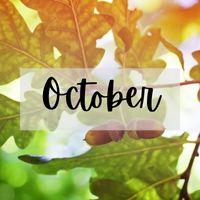
Plant
Early October is prime time to plant bluebonnet seeds. Plant now for a beautiful spring display. Check out the links in Learn More below about growing bluebonnets and other wildflowers from seed.
Garlic can be planted through October. Certified disease free bulbs are available at garden centers. Planting garlic purchased from the supermarket is not recommended. Plant perennial herbs such as oregano and thyme. Transplant into the garden ( broccoli, Brussels sprouts, cabbage, cauliflower, lettuce, greens). Most garden centers have good supplies at this time.
Most trees can be planted in October. Ornamental, shade and fruit.
Perennial vines, shrubs and groundcovers.
Cool season annuals like pansies add great color to the landscape.
Fertilize
If you didn’t fertilize in September, your lawns can be fertilized with a low nitrogen fertilizer no later than 6 weeks before the first projected frost. North Texas first frost is mid November. Read labels carefully. Never use more than the recommended amount as this can damage your grass.
Apply preemergence herbicide to lawns to avoid spring weeds. Learn more at the link below.
Prune
Try to resist pruning your deciduous trees until winter. That is the best time to prune. Don’t prune any spring blooming shrubs or plants since you will be pruning off the next year’s flowers. Let crape myrtles keep their seed pods as some birds enjoy them. Never top a crape myrtle.
Timely Tasks
Clean, oil, sharpen and repair garden tools. Store out of the elements. Pots can freeze and crack, so empty out soil and protect your pots and containers.
Move all tender plants into a protected area for the winter.
Check your watering systems. If we have lots of rain you can cut back on your weekly watering schedule. One inch of rain per week is a typical need for lawns and plants.
Mulch all bare soil.
Learn More
Denton County Master Gardener Association, Gardening Basics, “Growing Wildflowers from Seed”
Lady Bird Johnson Wildflower Center, “How to Grow Texas Bluebonnets”
AgriLife Today, “Apply fall preemergence herbicide to avoid spring weeds”
Texas A&M AgriLife Extension, “Pruning Trees and Shrubs With a Purpose”
Texas A&M AgriLife Extension, “Stop the Crape Murder!”
Denton County Master Gardener Association, Gardening Basics, “Caring for Gardening Tools”
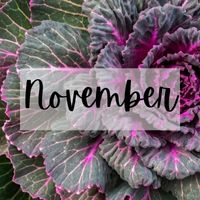
Plant
There’s still time to plant carrots, spinach, mustard greens, radish and turnips. They love the cold weather. See below for the complete list.
Great time to plant trees, vines and shrubs.
Plant spring and summer flowering perennials.
You can sow seeds of crimson or white clover as a cover crop, to protect soil and prevent weeds. Cover crops reduce soil erosion and run-off.
Fertilize
Lightly fertilize actively growing plants. Spread compost on all garden beds for added nutrition and winter protection. Avoid fertilizing perennials which will promote foliage growth that will be susceptible to frost or freeze damage.
Prune
Be sure to remove any vines that are growing around tree trunks. Keep groundcovers away from root flares. Clear away soil from the base of tree trunks.
Major tree pruning can be started this month. Remove all dead, damaged and diseased branches. Prune out any water spouts or unbalanced or crossing limbs. Prune unruly shrubs.
You can leave the seed heads for the birds.
Timely Tasks
Gather up fallen leaves and add them for the compost pile. If you have the ability to mulch the leaves, then you can spread them throughout the garden beds.
Pick any summer vegetables before a forecasted frost. Tomatoes will ripen indoors.
Protect any tender plants. Move them to a garage or insulated area. Keep all ceramic, clay and porcelain pots away from freezing temperatures.
Water the garden and landscape if we haven’t received any rain.
Birds still need food and water.
Learn More
Texas A&M AgriLife Extension, “Fall Vegetable Gardening Guide”
University of Minnesota Extension, “Cover crops and green manures in home gardens”
Austin Organic Gardeners, “Cover Crops and Green Manures”
Denton County Master Gardener Association, Gardening Basics, “Leaves for Mulch and Compost”
Texas A&M AgriLife Extension, Earth-Kind®, “Follow Proper Pruning Techniques”
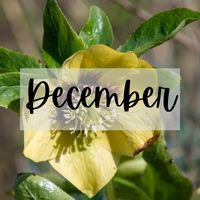
Plant
Trees and shrubs can still be planted in December.
Continue setting out your cool season vegetable transplants. Use row cover if needed due to extreme weather. Herb transplants can be planted. Check to see which herbs are winter hardy in your planting zone. North Texas ranges between zones 7B and 8B.
Tulip and hyacinth bulbs, to name a few, can be planted this month. Tulips and hyacinth bulbs need to have had 60 days of refrigeration prior to planting.
Fertilize
Use fertilizers at half strength during this time. Avoid fertilizing perennials which will promote foliage growth that will be susceptible to frost or freeze damage.
Prune
Prune fruit trees and grapes at the end of winter. Dead or dying limbs can be pruned any time. If you prune too early, flowering may occur.
Cut back dormant perennials, leaving roots intact. You can leave seed heads intact to feed the birds since food is scarce.
Timely Tasks
December is a great time to look through all the seed catalogs. Order early for best selection. Choose varieties that work well in our Texas climate.
Plan your garden layout, being sure to rotate your crops wherever possible.
Consider adding a drip irrigation system to your garden, before spring. This is a great time saver as well as the best way to conserve water. Check the link in Learn More for beginner set-up of your new drip system.
Without rain your plants and grass can dry out. Check moisture levels and water appropriately. One inch of rain per week is needed.
Continue composting all your kitchen scraps with fallen leaves and tree trimmings.
Make sure tools are clean and oiled before storing.
Have floating row cover available and cover any plants that need protection. Check out the great information below regarding row cover.
Collect soil samples to submit for soil testing. The results report will include recommendations to improve your soil for your spring garden.
Disease or Insects
Use these great resources to learn about controlling disease and insect pests in your garden.
Texas A&M AgriLife Extension, “Extension Entomology”
Texas A&M AgriLife Extension, “Texas Plant Disease Handbook”
Learn More
University of New Hampshire Extension, “Using Row Covers in the Garden”
HortTube with Jim Putman, “How to Install Drip Irrigation-Part 1 The Basic Pieces and Parts”
Texas A&M AgriLife Extension, Earth-Kind®, “Follow Proper Pruning Techniques”
Denton County Master Gardener Association, Gardening Basics, “Caring for Gardening Tools”
Denton County Master Gardener Association, “Gardening Basics, Soil Testing”

Plant
It’s time to plant cold-hardy transplants such as calendulas, dianthus, flowering kale, pansies and snapdragons. You can plant spring flowers and vegetable seeds indoors, as well as seeds in greenhouse conditions for later transplanting. Grow lights and heat will speed things along. It may seem early, but some seedlings need lots of time to establish before being moved outside.
Fruit and ornamental trees, asparagus, berries, peas, grapevines, shrubs, vines and other permanent plants.
Plant onions in late January to early February. In North Texas, we can grow short-day and intermediate-day onions. See below for growing information. January is the best time to plant peas.
Divide perennials and biennials that might be overcrowded. These include violets, phlox daylilies and irises.
Fertilize
Don’t fertilize lawns too early. Wait until late spring.
Apply a light application of slow release fertilizer to cool season annuals. Cotton seed, alfalfa meal or commercial slow release fertilizer products can be used according to label instructions. See below for additional information.
Organic option: Use organic root stimulator or compost tea for new shrubs and trees monthly until established. Fertilize asparagus beds in late January and add compost. Apply greensand and rock minerals to any plants that appear yellow with green veins. Dried blood meal is an excellent source of fertilizer for pansies and cool season annuals.
Prune
Remove all vines and groundcovers away from the root flare of trees. Prune shade trees by removing damaged and dead limbs. Remove water sprouts or crossing limbs. DO NOT prune the tops off crape myrtles. Keep seed pods intact for birds. They are also considered decorative in the landscape.
Timely Tasks
Make flower and vegetable garden plans now before spring. Remember that warm season vegetables need a minimum of 8 hours of sunlight to thrive. Order seeds early for best selection. Think about any new beds you want to create and which type of irrigation methods you want to implement.
Cover frost tender plants with row cover before any expected cold snaps. Be sure to mulch all bare soil to preserve nutrients and moisture.
Learn More
Texas A&M AgriLife Extension, “Vegetables”
The Dallas Garden School, “Growing Onions in North Texas: The Ultimate Guide”
Aggie Horticulture, “Garden Checklist for January/February 2013”

Plant
Mid-February is a great time to plant seed potatoes. Most of our local nurseries will have a good supply. Pontiacs for red potatoes and Kennebecs for whites are 2 recommended varieties for our climate.
Still a great month to plant trees, shrubs, and other permanent crops. Planted now, they will be established before the warm weather sets in.
Asparagus crowns are available at nursery centers; this is the best month to plant them. They take up to 2 years before your first harvest, so don’t wait. Asparagus is very productive in our area.
Start seeds indoors for warm-season plants such as tomatoes, peppers, and eggplant. Plant winter annuals for early spring color. Plant dahlias this month.
Put out cool-weather transplants like broccoli, cabbage, Brussel sprouts and cauliflower. Watch your ten ten-day forecast. A light frost won’t affect cool weather crops, however, a hard freeze can cause damage.
Start cool-weather seeds outdoors. These include beets, carrots, lettuce, and spinach. Check your seed packets for planting dates. Root crops are always best planted outdoors in the bed they germinate and grow in—plant seeds, as they are not good candidates as transplants.
Organic Option: Corn gluten meal can be applied as an organic pre-emergent early in the month. Timing is critical for good results.
Prune
Peach and plum trees need to be pruned to an open center. This allows light to penetrate each branch. Remove any shoots that are growing toward the middle and any diseased or dying limbs.
Climbing roses should be pruned after their spring bloom. Bush roses can be pruned now. Ornamental trees and shrubs should be pruned to remove dead, diseased or damaged limbs. Never top trees or crape myrtles. The right plant in the right place will prevent the need to drastically prune.
Remove ground covers from root flare of trees. They need to breathe. Make sure the root flare is visible above ground level for a healthy tree.
Timely Tasks
Fire Ants?? Try food grade diatomaceous earth. Ants will disappear in minutes.
Repair any irrigation hoses and drip lines. Depending on the rain, don’t forget to water dry areas. One inch of rain per week should alleviate the need for additional irrigation.
Cover bare soil with compost and mulch.
Plan for any new planting beds. Build before spring and bring in potting soil and compost as needed to refresh planting areas.
Get your soil tested. This is very helpful as you can make nutrient adjustments to your planting beds before spring. Texas A&M AgriLife Soil, Water, and Forage Testing Laboratory
Learn More
Denton County Master Gardener Association, “Gardening Basics, Soil Testing”
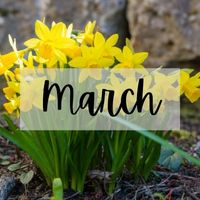
Plant
Trees, shrubs, groundcovers and vines. Plant perennials that are cold hardy. A freeze is bound to happen in March or April. Plant cool-season flowers such as snapdragons and petunias.
Start setting out herbs such as lavender, basil, mint and sage transplants. Watch your 10 day forecast before setting out tomato and pepper transplants. Remember they can’t tolerate any freezing temps. Continue outdoor seed planting of vegetables such as beets, carrots and most greens. Late March plant bean seeds outdoors.
Fertilize
If grass is growing actively, start your fertilization schedule. A good rule of thumb is if you have cut the grass (not the weeds) twice it is ok to fertilize. Check out the pre-emergent information below, and make sure to use it in a timely fashion. Once the weeds have germinated, a pre-emergent is ineffective.
Organic Option: Use an organic foliar spray on all planting areas. Remember to drench the soil as well. This acts as a root stimulator. Early in the month corn gluten meal can be applied as an organic pre-emergent. Timing is critical for good results.
Fertilize annuals at this time.
Compost and mulch all new plantings.
Prune
Finish major pruning of trees. No pruning paint is needed in most cases. Fruit trees can be pruned just as the buds are starting to appear. Pruning of red oaks is not recommended until after July.
Spring flowering plants should only be pruned after they are finished blooming.
Timely Tasks
We all get anxious for spring and getting out into the garden. Be sure to protect any warm weather crops that you put out from the cold. We could see a late freeze in April.
Start a compost pile somewhere in your yard. Throw all of your vegetable scraps, leaves and grass clippings in it. Don’t send any of those great materials to the landfill.
Disease or Insects
Use these great resources to learn about controlling disease and insect pests in your garden.
Texas A&M AgriLife Extension, “Extension Entomology”
Texas A&M AgriLife Extension, “Texas Plant Disease Handbook”
Learn More
Texas A&M AgriLife Extension, Earth-Kind® “Composting”
Texas A&M AgriLife Extension, “Pre-emergence Herbicides for the Home Lawn”
Texas A&M AgriLife Extension, “Zoysiagrass”
Texas A&M AgriLife Extension, “St. Augustinegrass”
Texas A&M AgriLife Extension, “Centipedegrass”
Texas A&M AgriLife Extension, “Bermudagrass Lawn Management Calendar”
Sign Up for Our E-Magazine
Grow Your Skills
Conquer your landscape! Start getting our best how-to advice today. Sign up for our free monthly e-magazine, The Root. Receive expert tips, easy-to-follow plans from experienced gardeners, and learn new techniques you can put into practice right away.
